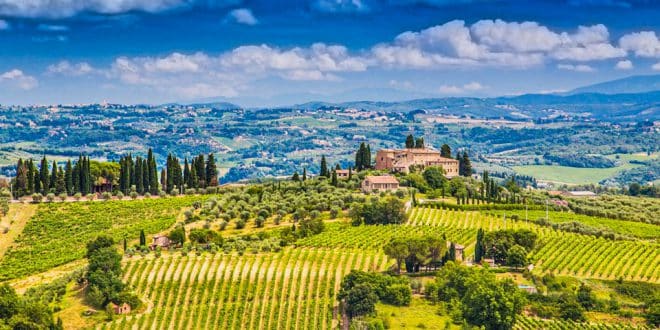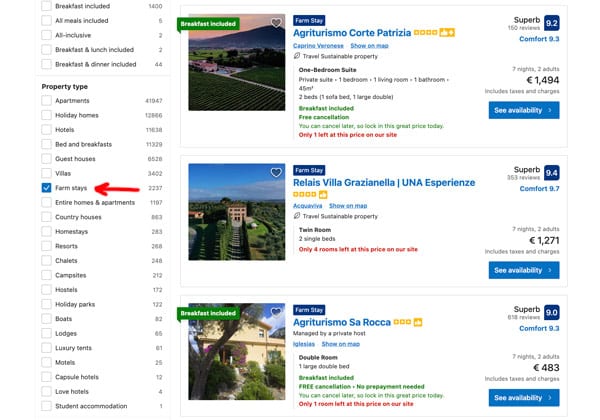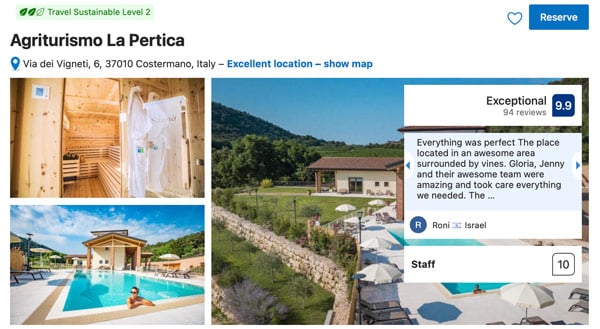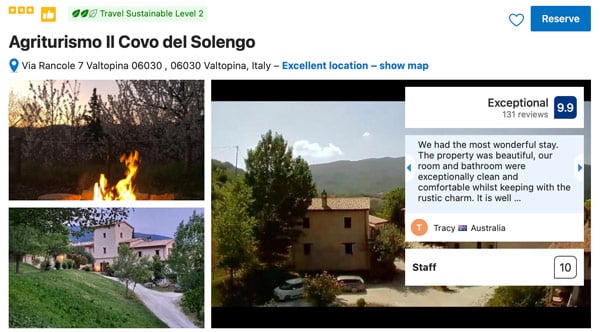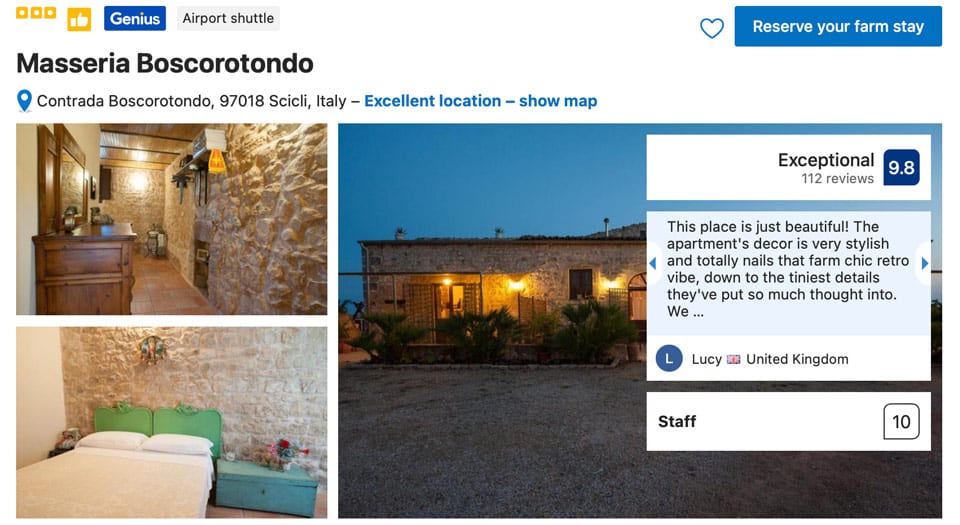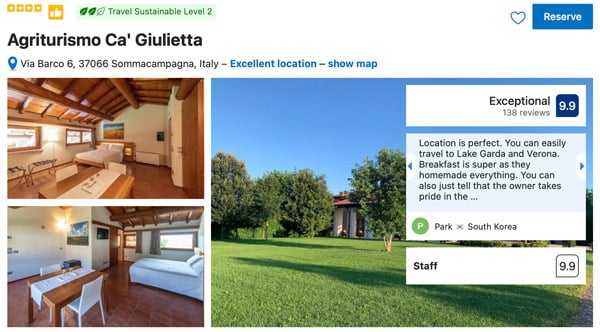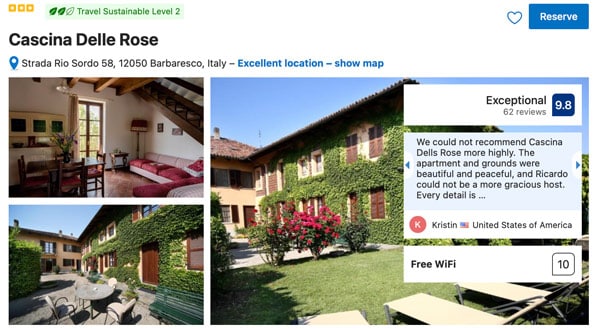If you have already fallen in love with Italy and want to experience the land of sun and wine on a new level, then it’s time to plan a trip to the regions.
Passing through Italy on a high-speed train, you must have noticed that something is grown almost throughout the entire territory, agriculture is flourishing here! There are thousands of interesting places in Italy and you can explore the country endlessly.
Agrotourism (Agriturismo) is a very popular topic among Italians, but almost no one knows about it. Or they know but are afraid to try.
But you, our dear reader, are not a faceless mass tourist. On the contrary, you want to discover and know your Italy.
Page Contents
History of the development of agritourism in Italy
The idea of rural tourism appeared in 1965 when the manifesto of Agritourism (la costituzione dell’Agriturist) was adopted. Conferences, press interviews, and “green days” on the farm were held, and open days (gates) were organized for those who were interested in agriculture.
The first farmhouse was officially registered in 1973 in the autonomous province of Trento. In the same year, South Tyrol passed the Rural Tourism Development Act, which included measures to support the farmhouse for the first time.
In 1975, the Veneto and Campagna regions created incentive laws to develop rural tourism. As a result, the first edition of the Guide to Rural Hospitality (Guida dell’Ospitalità Rurale) was published, featuring 80 farms equipped to host tourists.
10 years later, on December 5, 1985, the government of the Italian Republic signed a law that determined the rules for conducting agritourism activities for farmers. As a result, there were 6,000 registered companies, 55,000 beds, and a discounted annual turnover of around 108 million euros (210 billion lire).
At the end of 1991, a special tax regime for agritourism was introduced, which came into force on January 1, 1992, which allows the calculation of taxable income at a single simplified rate of 25%. An interesting fact is that in Sicily, the legal framework for this law was tightened only in 1994.
In 1998, 8,500 and 125,000 beds were already registered. As a result, discounted turnover of Italian farmhouses rises to 495 million euros (960 billion lire). The following year, the milestone of two million overnight stays was exceeded.
Tourist farmsteads in Italy in 2001 crossed another important milestone – 10,000 companies. The leading regions are always Trentino-Alto Adige (2500 farmhouses), Tuscany (2100), and Veneto (730).
Is Farm Stays Holidays Right for You?
Agritourism in Italy is for you if you:
- Already visited Rome, Florence, Venice, and other popular cities.
- Love Italian cuisine
- Love nature and privacy
I warn you! Having tried this type of holiday and traveled once, you will want to return to Italy at every opportunity. I warned you.
What is Unique About Agriturismo?
Why do I love agritourism in Italy? I highlight three factors:
- The opportunity to be alone with nature – admire the scenery, listen to the birds singing, breathe fresh air.
- Delicious organic food. There are often very authentic, inexpensive family restaurants on farms or nearby.
- Almost always, the owners of houses are very friendly, warm-hearted people who are happy to show and tell about their business. My acquaintance with many farmers turned into friendship, and we are pleased to return.
Here is a link to our favorite farmhouse in Umbria.
My friends and I come here several times a year, and in 2019 I even decided to celebrate my birthday here.
What is the Price?
Agritourism is most often a relatively economical form of recreation. For example, accommodation and car rental will cost 500 EUR per week, and you will spend from 200 to 500 EUR on food.
Accommodation
Accommodation at a farmhouse costs on average from 60 to 100 EUR per night for 2-3 people, of course, there are more economical or luxurious options – the choice is yours.
Car rental
Renting a car will cost about 350 EUR per week. An international driver’s license is not required but may be helpful. Rent a car at www.rentalcars.com
With fuel consumption of 7 liters per hundred kilometers, considering the fuel price is about 1.6 EUR, a thousand kilometers of travel will cost you 112 EUR.
Food
Breakfasts on farms are most often included in the accommodation price or offered optionally. If you buy food and cook on your own, you can meet 250 EUR for a week together. On the other hand, eating in restaurants and tasting local delicacies is worth planning food expenses around 550 EUR per week for two.
How to Plan Your Perfect Farm Stay Vacation in Italy
For agritourism, it is ideal to come to Italy for one to two weeks. However, the general recommendation is to spend at least a week in each region.
There are three strategies:
- Travel from north to south of Italy or vice versa, staying at each farmhouse for a maximum of 2 nights. Thus, within 2 weeks, you will visit many regions, but there is a risk of being overwhelmed with impressions and getting tired.
- Choose one or two houses, and calmly explore the surroundings nearby. Then, we set a goal to explore a particular region, for example, Tuscany or Abruzzo, and travel all week through it.
- Find a balance between the first two strategies. Take 3 regions for 2 weeks to study.
Tourists tend to choose the second option, but I recommend focusing on a maximum of two regions.
How to Choose and Book an Accommodation
Booking.com is the most trusted site for booking holidays in Italy. Alternative sites should only be considered as a last resort. I will show you an example of how to find a beautiful and reliable farmhouse on your own, where you will definitely be accepted and not deceived.
Follow this link for booking – pay attention to the filters I applied.
- Accommodation type: Farm stays
- Location rating: 9+
- Review: 8+
Then you can take the region you are interested in, for example, Tuscany, and watch Agriturismo on vacation there. Please pay attention to the reviews, as they often contain travelers’ helpful tips and life hacks.
Top 5 Farm Stays in Italy – Editor’s Choice
Italy’s pastoral landscapes are dotted with a myriad of farm stays, each offering a slice of rural bliss, but there are a select few that stand out for their unparalleled charm and hospitality. After a discerning exploration and sifting through the glowing testimonials of seasoned travelers, I have curated a list of the top 5 farm stays that epitomize the quintessence of Italian rural luxury. These retreats are not merely accommodations; they are sanctuaries where the rhythms of country life play a soothing symphony for the soul.
Here, amid the whispering vineyards and sun-dappled olive groves, the authentic Italian pastoral dream unfurls in its full glory, offering an escape that is as authentic as it is enchanting. Join me as we traverse the heartland of Italy to uncover these hidden gems, each a harmonious blend of comfort and tradition, promising an experience that is as enriching as it is memorable.
Agriturismo La Pertica – Among the Lush Vineyards near Lake Garda
Agriturismo La Pertica, nestled among the lush vineyards of Costermano, Veneto, offers a luxurious countryside experience with its infinity pool and sauna facilities.
Guests can indulge in a sumptuous breakfast, enjoy panoramic views from their terraces, and explore the region’s beauty. This spot is highly praised for maintaining its impeccable standards and offering warm hospitality, making it an idyllic retreat for those seeking relaxation and adventure near Lake Garda.
Agriturismo Il Covo del Solengo – a Pearl Among the Umbrian Hills
Agriturismo Il Covo del Solengo, nestled in the Umbrian valleys near Assisi, invites guests to bask in its mountain vistas and indulge in farm-fresh cuisine.
Family-run hospitality shines with homemade pasta and convivial dinners, while rustic rooms offer serene comfort. Perfect for families and couples, it’s a genuine taste of the Italian countryside.
Masseria Boscorotondo in the Heart of Sicily
Masseria Boscorotondo offers an authentic slice of Sicilian rural life, just a stone’s throw from the quaint village of Scicli and inviting beaches.
This charming farm stay boasts rustic apartments adorned with original stone walls, exuding a timeless elegance. A tranquil garden pool and warm hospitality by hosts Vincenzo and Carlo complete the serene experience. It is ideal for those seeking to immerse themselves in the tranquility of the countryside while being close to the allure of chocolate-rich Modica and the historic splendor of Ragusa.
Agriturismo Ca’ Giulietta – Eco-Conscious retreat in Veneto
Agriturismo Ca’ Giulietta, a serene haven close to Sommacampagna, offers a modern, eco-conscious retreat.
Luxuriate in minimalist rooms with handmade furnishings and enjoy sumptuous breakfasts featuring homemade delights. Ideal for a tranquil escape, it’s a stone’s throw from Verona yet peacefully nestled in nature’s embrace.
Cascina Delle Rose – Among the Barbaresco Vineyards in Piedmont
Overlooking the sweeping Barbaresco vineyards, Cascina Delle Rose beckons travelers with its serene ambiance near Alba.
Relish the harmony of meticulously furnished rooms and partake in the intimate experience of winemaking on-site. Alpine vistas serve as a backdrop to this haven of viniculture, where every stay promises a personal touch from the passionate hosts, ensuring a genuine Piedmontese retreat.
When to Come
The best time to visit rural Italy is from May to September.
South of Rome, in the regions of Sicily, Calabria, Basilicata, Puglia, and Campania, is comfortable also in April and October.
Do you want to be completely alone? Head between November and March to the islands of Sicily or Sardinia. No tourists, prices are minimal, and all sights will be for you only.
Where to Go for the First Time
The obvious choice is Tuscany. However, my personal choice is Sicily, Umbria, and Abruzzo.
If you need advice on vacations in rural Italy, I will be happy to answer your questions in the comments.
 Italy for me From Italy with love
Italy for me From Italy with love

